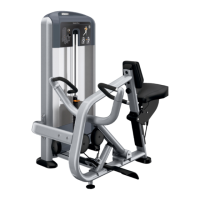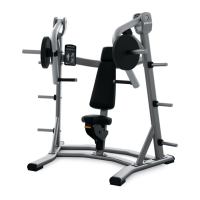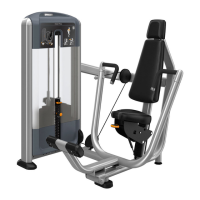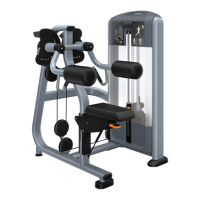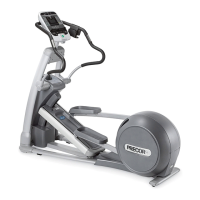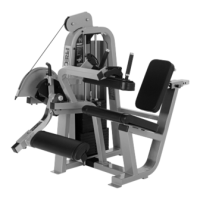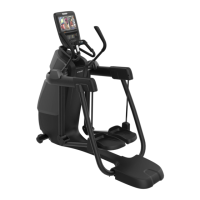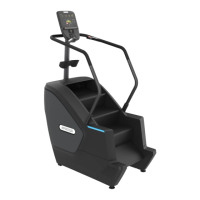Inspect and Lubricate Bearings and Bushings
Precor uses high quality bearings designed for strength applications and long
service life. Each week, do the following to maintain the bearings and bushings
on the equipment:
Bronze bushings: Precor recommends using a small amount of Teflon
®
spray lubricant to lubricate these bushings, which usually support rotary
shafts. Spray directly onto the shaft, and then rotate the shaft through its
complete range of motion several times. Inspect bushings for excessive
wear and damage. Be careful when using the spray lubricant; it can stain
carpet and clothing. Wipe off any excess lubricant with a cloth.
Polymeric bushings: Lubricate the polymeric bushings on the guide rods
by applying a light coat of Teflon
®
spray lubricant. Spray the lubricant on a
cloth, then wipe the cloth along the full length of the guide rod.
Important: Do not use petroleum based lubricants on Polymeric bushings.
Sealed Bearing Pivot Points: These locations are protected from the
outside environment and require no lubrication. While cleaning the
equipment, wipe down the shafts and external bearing surfaces with a
cloth to prevent the buildup of dust and perspiration.
Linear Bushings: These bushings allow mechanical parts to travel
smoothly along guide rods. Inspect the ends of each guide rod to make
sure they are fastened correctly and all bolts are tight.
Wipe down guide rods using a light application of a Teflon
®
spray lubricant
to remove dust, hair, and dirt.
Check and Lubricate Seat Adjustment
The seat adjustment mechanism requires little maintenance. However,
because seat safety is important to the safety of a workout, you should check
the seat lever regularly to see if it sticks when used.
To test if the seat lever needs lubrication, elevate the seat slightly while
pressing and releasing the lever. The lever should snap back out easily. If the
lever sticks, lubricate its pivot pin with Teflon
®
spray lubricant. Wipe off any
excess lubricant with a cloth.
Inspect Gas Assist Shock on seat adjustment for leaks. Replace if necessary.
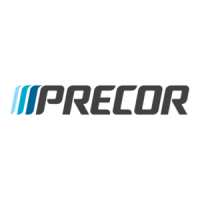
